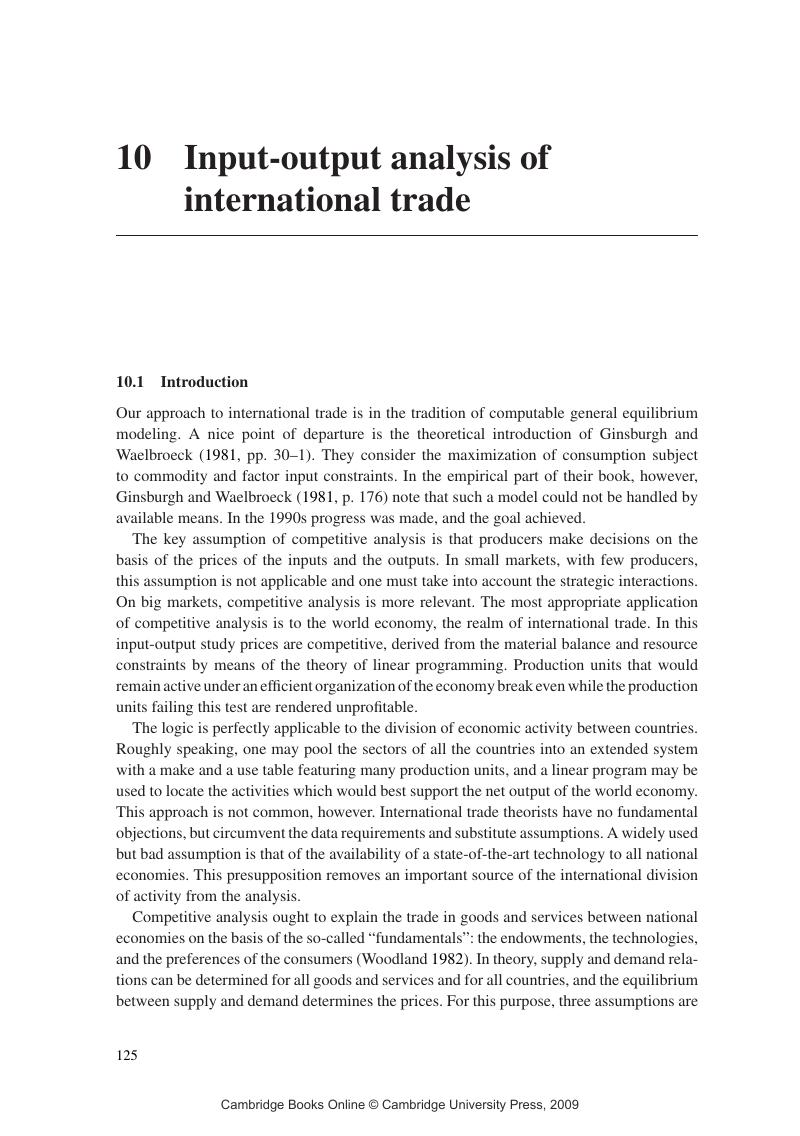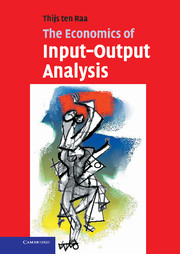Book contents
- Frontmatter
- Contents
- List of figures
- List of tables
- Preface
- Glossary
- 1 Introduction
- 2 Input-output basics
- 3 Multiplier effects
- 4 Linear programming
- 5 Are input-output coefficients fixed?
- 6 The System of National Accounts
- 7 The construction of technical coefficients
- 8 From input-output coefficients to the Cobb–Douglas function
- 9 The diagnosis of inefficiency
- 10 Input-output analysis of international trade
- 11 Environmental input-output economics
- 12 Productivity growth and spillovers
- 13 The dynamic inverse
- 14 Stochastic input-output analysis
- Solutions to exercises
- Index
- References
10 - Input-output analysis of international trade
Published online by Cambridge University Press: 18 December 2009
- Frontmatter
- Contents
- List of figures
- List of tables
- Preface
- Glossary
- 1 Introduction
- 2 Input-output basics
- 3 Multiplier effects
- 4 Linear programming
- 5 Are input-output coefficients fixed?
- 6 The System of National Accounts
- 7 The construction of technical coefficients
- 8 From input-output coefficients to the Cobb–Douglas function
- 9 The diagnosis of inefficiency
- 10 Input-output analysis of international trade
- 11 Environmental input-output economics
- 12 Productivity growth and spillovers
- 13 The dynamic inverse
- 14 Stochastic input-output analysis
- Solutions to exercises
- Index
- References
Summary

- Type
- Chapter
- Information
- The Economics of Input-Output Analysis , pp. 125 - 138Publisher: Cambridge University PressPrint publication year: 2006



